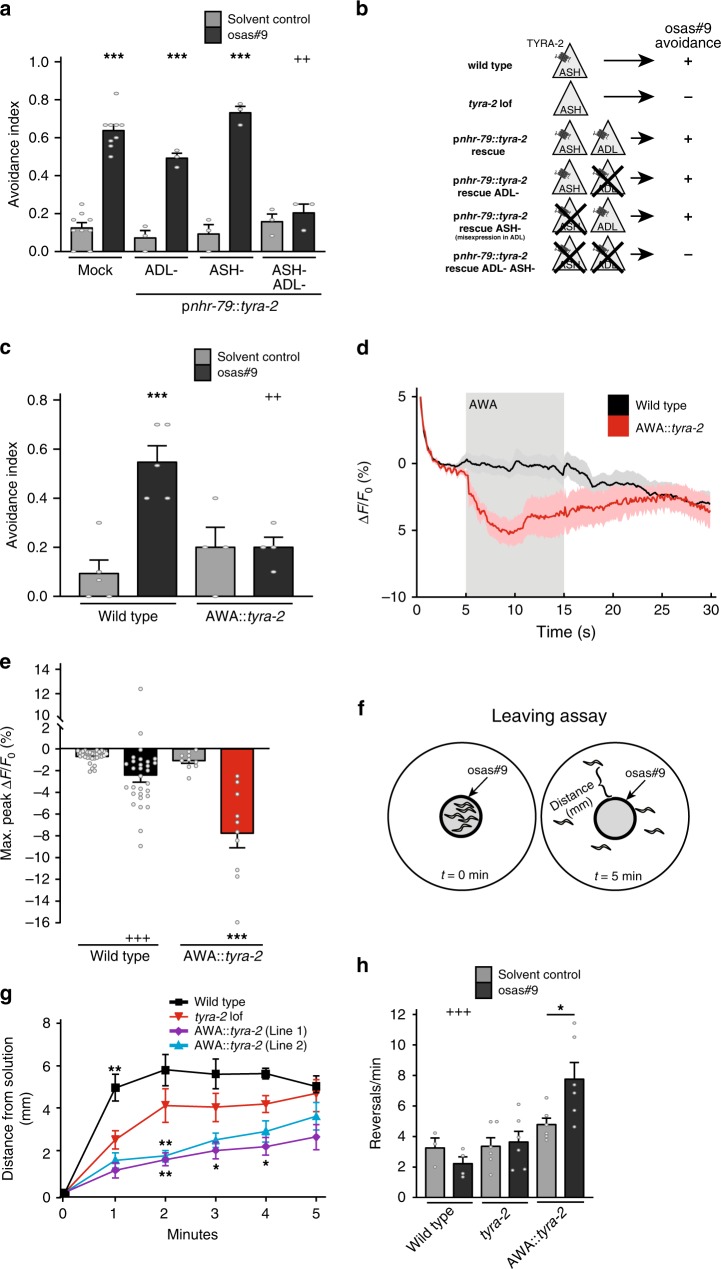Fig. 5.
Ectopic expression of tyra-2 confers the ability to respond to osas#9. a Misexpression of tyra-2 in ADL neurons confers avoidance behavior in response to osas#9. nhr-79 promoter driving tyra-2 expression in ASH and ADL sensory neurons rescues osas#9 avoidance. Ablation of either ADL or ASH neurons does not affect osas#9 avoidance in the rescue lines, suggesting that misexpression of tyra-2 in ADL neurons is sufficient for osas#9 response. Ablation of both ASH and ADL completely abolished avoidance. n ≥ 5 trials. b Schematic illustration of cellular ablations in the transgenic rescue lines expressing tyra-2 under the nhr-79 promoter. c Animals with reprogrammed AWA sensory neurons in tyra-2 lof background do not avoid 1 µM osas#9. n ≥ 4 trials. d AWA neurons (black) do not exhibit calcium transients in response to 1 µM osas#9, while reprogrammed AWA::tyra-2 neurons (red) are hyperpolarized upon exposure (gray-shaded region), n = 10 animals. e Maximum fluorescence intensity in transgenic worms before (solvent control) and during exposure to 1 µM osas#9. f Schematic illustration of the leaving assay to measure osas#9 attraction. g Wild type (black), tyra-2 lof (red), and AWA::tyra-2 lines (1 [magenta], 2 [cyan]) were subjected to 10 pM osas#9 in the leaving assay. Wild-type animals left the osas#9 solution spot quicker than the tyra-2 lof animals, whereas the misexpression lines remained closer to osas#9, n ≥ 3 trials. h Reprogrammed AWA::tyra-2 animals have an increased reversal rate in comparison to both wild type and tyra-2 lof animals in 10 pM osas#9, n ≥ 3. Data presented as mean ± S.E.M; *p < 0.05, **p < 0.01, ***p < 0.001. One factor ANOVA with Sidak’s multiple comparison posttest

